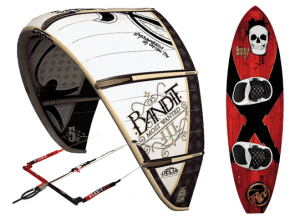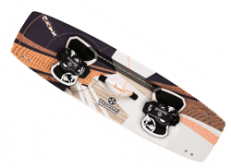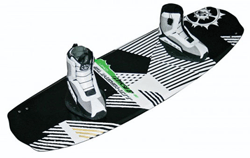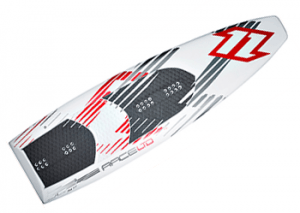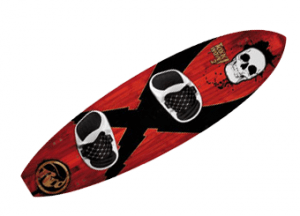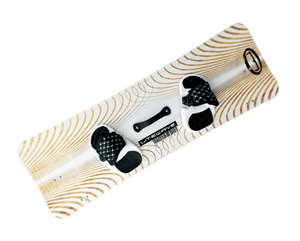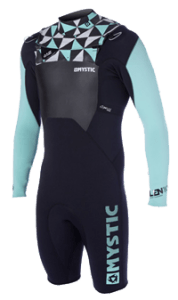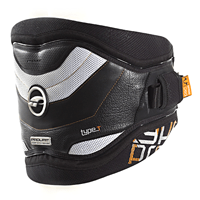Kites
If you start your search for a kite you will quickly notice that there is still quite a lot to choose. As a beginner, you are looking for a kite with a lot of “depower” (meaning you can regulate the amount of power in your kite) and that makes it possible to restart relatively easily from the water. An advanced kiter has completely different wishes. So this varies depending on skill level.
Tube kites
Tubekites are by far the most used kites for kitesurfing. They get their strength through an inflatable frame (type of inner tube). The airframe gives the kite its shape and through it becomes sturdy or firm enough. The airframe keeps kites floating very well on the water and they are therefor quite easy to ‘relaunch’.
Tube kites:
- C-Kites
- Bow-Kites
- SLE Kites
- Delta Kites
- Sigma-Kites
- Hybrid Kites
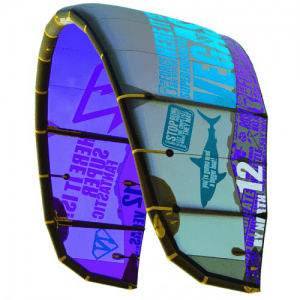 C-Kites
C-Kites
The name ‘C-kite’ says it all, these kites have the shape of a C. The C-kite (also LEI; Leading Edge Inflatable) is the classic ‘tube-kite’. Most kites have 4 lines that are attached directly to the kite. Some models have a 5th line in the middle of the Leading Edge. This makes ‘relaunching’ on the water even easier.
This kite has lost a lot of ground in recent years to the SLE and BOW kites. Most brands still keep a model in their assortment. Nowadays the C-kites already have more depower than before and therefore are a lot safer.
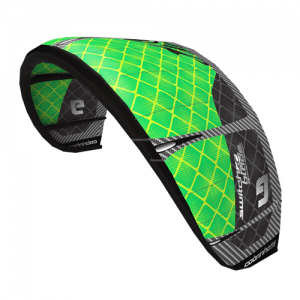 Bow-Kites
Bow-Kites
The Bow kite is similar to the SLE kite (see below). The BOW kite has a negative trailing edge. The backward curved wing tips (“sweep”) provide more depower, a flatter stable kite and steers quickly and directly. The leading edge is supported by a bridle (a collection of ropes that connects the kite with the lines.)
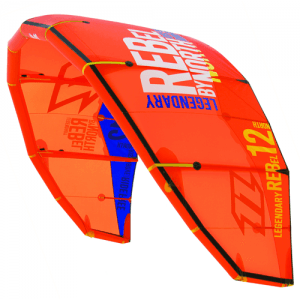 SLE-Kites
SLE-Kites
Just like with Bow-kites, the Leading Edge is supported by a bridle, that also preserve the shape of the LE. SLE (Supported Leading Edge) kites have been developed to achieve greater safety. SLE kites are more efficient in shape than the ordinary C-shapes, and therefore provide more power per square meter of cloth.
An extra advantage is that this type of kite has a large wind range. It seems that these kites, together with the BOW kite, take the upper hand compared to the classic C-shape kite. In comparison with the BOW kite, a SLE kite has a straight trailing edge.
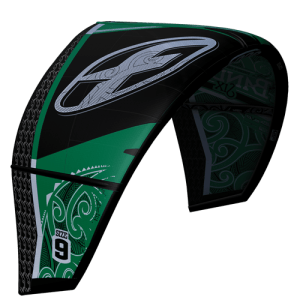 Delta-Kites
Delta-Kites
This is a C-kite that looks like a Delta. Especially on the kite is that it automatically reboots after a crash on the leading edge. Result of this design: large wind range, good low-end, reduced Aspect-Ratio so you can sail the kite a size smaller than the same size BOW-kite. A lot of kit manufacturers now offer this type in addition to the Bow / SLE.
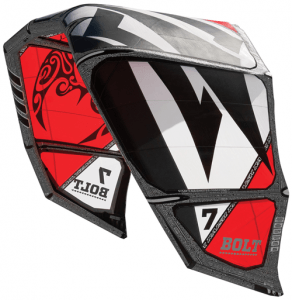 Sigma-Kites
Sigma-Kites
Manufacturer Robbie Naish (Naishkites) has been coming out with a special kite for several years now. The Leading Edge has a Sigma shape. There is a kink in the LE and trailing edge. This will restart the kite better. Because of the shape the force can also be traced further, because it should result in a larger wind range.
Hybrid-Kites
Originally, the hybrid kite was a kite that can be flown both as C-shape and as BOW / SLE. Actually, only the Takoon FURIA was a hybrid. You can “convert” it from SLE to C (with 5th line). Nowadays people call everything that can not be placed in the pure categories Bow, SLE, C-kite, Delta C kite, “hybrid kites”
Foil kites
Foilkites (also called mattresses or ram-air kites) fill themselves with air, like for example, a parachute fills itself with air. By using ingenious check valves, no water enters the kite after it has been poured on the water, for example.
Image: Peter Lynn Hornet II arc-foil kite
The two biggest differences between foilkites are that there are types with lanes (‘bridle’) and types without lines. Kites of the latter type have the fixing points for the lines directly at the ends of the kite.
Foil kites:
- Arc-foil kites
- Tomed-foil kites
Arc-foil Kites
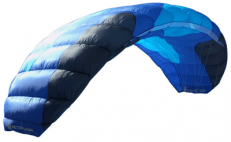 These kites look like they are in the air, strongly on the classic tube kites. They have the same inverted U-shape and the 4 lines are also directly attached to the kite. Instead of a single canvas with inflatable frame, this is a double cloth. (mattress). At the bottom are 2 carbon poles that keep the sides in shape.
These kites look like they are in the air, strongly on the classic tube kites. They have the same inverted U-shape and the 4 lines are also directly attached to the kite. Instead of a single canvas with inflatable frame, this is a double cloth. (mattress). At the bottom are 2 carbon poles that keep the sides in shape.
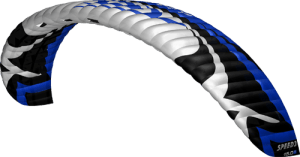 Bridle-foil Kites
Bridle-foil Kites
Again, this is a mattress flyer. This uses a complex bridle. This keeps the kite in shape and, just like a BOW / SLE kite, it is much flatter on the wind, so that more power per surface is developed.

